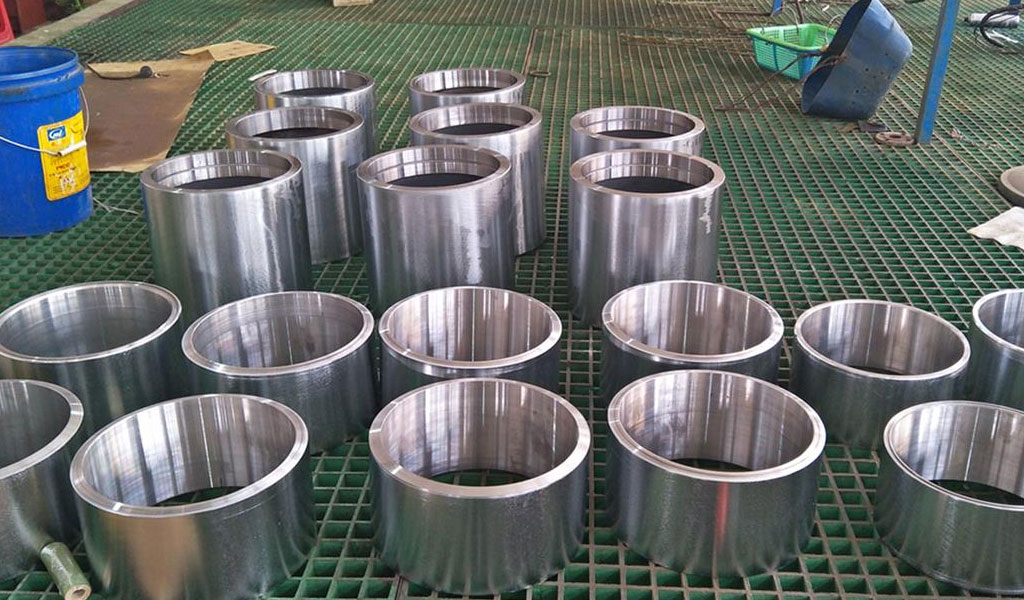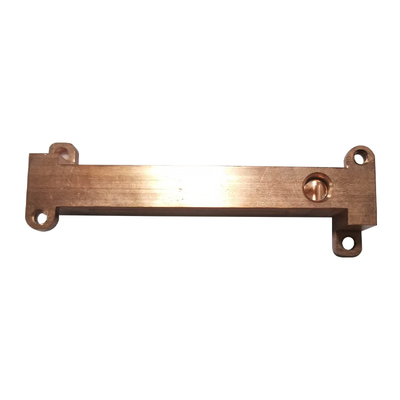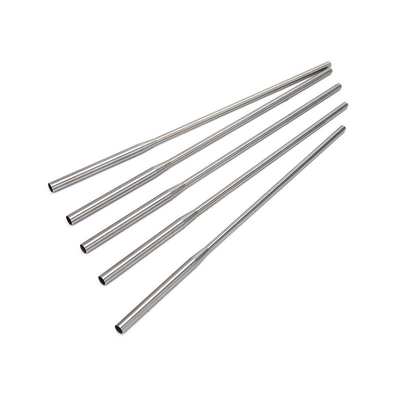Hard Chrome Plating: Advantages and Processes in Electroplating

Hard chrome plating, also known as industrial chrome plating, is a form of electroplating that involves the application of a layer of chromium onto a metal object. This process is distinct from decorative chrome plating, which is typically used to provide a shiny, aesthetically pleasing finish. Hard chrome plating is primarily employed to improve the durability, hardness, corrosion resistance, and wear resistance of metal surfaces, making it an essential technique in various industrial applications. This article delves into the detailed aspects of hard chrome plating, exploring its advantages, processes, applications, and environmental considerations.
History of Hard Chrome Plating
Early Developments
The discovery and development of chromium plating can be traced back to the early 20th century. The initial research and experimentation with chromium began in the 1920s when Dr. George J. Sargent and his colleagues at Columbia University developed a method for depositing a thin layer of chromium onto metal surfaces using electrochemical processes. This breakthrough laid the foundation for both decorative and industrial chrome plating techniques.
Industrial Applications
As the industrial revolution progressed and machinery became more complex, the need for durable and wear-resistant coatings grew. Hard chrome plating emerged as a solution to these requirements, providing a robust and long-lasting coating for various machine parts, tools, and equipment. Over the decades, advancements in plating technology and the development of more efficient and environmentally friendly processes have solidified hard chrome plating's position as a crucial technique in modern manufacturing and engineering.
Advantages of Hard Chrome Plating
Hard chrome plating offers numerous advantages that make it a preferred choice in many industrial applications. These benefits include:
Enhanced Hardness and Wear Resistance
One of the primary advantages of hard chrome plating is its exceptional hardness. The chromium layer deposited during the plating process typically has a hardness rating of approximately 65 to 70 HRC (Rockwell Hardness Scale), which significantly enhances the wear resistance of the coated surface. This makes hard chrome-plated components ideal for applications involving high friction, heavy loads, and abrasive conditions.
Corrosion Resistance
Chromium is inherently resistant to corrosion, making hard chrome plating an effective solution for protecting metal surfaces from rust and other forms of corrosion. The chromium layer acts as a barrier, preventing moisture, chemicals, and other corrosive agents from reaching the underlying metal substrate. This property is particularly valuable in industries where components are exposed to harsh environmental conditions, such as marine, chemical processing, and oil and gas industries.
Low Coefficient of Friction
The smooth and polished surface of hard chrome plating exhibits a low coefficient of friction, reducing the amount of friction and wear between moving parts. This characteristic is especially advantageous in applications where components need to slide or rotate against each other, such as in hydraulic cylinders, piston rings, and bearings. The reduced friction not only extends the lifespan of the components but also improves their efficiency and performance.
Dimensional Consistency
Hard chrome plating can be applied with precise control over thickness, allowing for consistent and uniform coatings. This precision ensures that the plated components maintain their dimensional tolerances and meet the required specifications. The ability to achieve consistent thickness is crucial in applications where tight clearances and accurate fits are essential for proper functioning.
Repair and Reconditioning
Hard chrome plating is an effective method for repairing and reconditioning worn or damaged components. By building up a new layer of chromium on the surface, the original dimensions and properties of the component can be restored. This repair process is often more cost-effective than replacing the entire component, making it a preferred option in industries where equipment maintenance and longevity are critical.
High Temperature Resistance
Chromium has excellent thermal stability, making hard chrome-plated surfaces capable of withstanding high temperatures without degrading or losing their properties. This resistance to heat is beneficial in applications involving elevated temperatures, such as in engines, turbines, and other high-temperature environments.
Hard Chrome Plating Process
The hard chrome plating process involves several stages, each critical to achieving a high-quality and durable coating. The main steps include surface preparation, electroplating, and post-plating treatments.
Surface Preparation
Proper surface preparation is essential for ensuring the adhesion and quality of the chrome plating. The preparation process typically involves cleaning, degreasing, and removing any contaminants or oxide layers from the surface of the metal substrate. Common surface preparation methods include:
- Cleaning and Degreasing: The metal surface is thoroughly cleaned using solvents, alkaline cleaners, or ultrasonic cleaning to remove oils, grease, dirt, and other contaminants.
- Abrasive Blasting: Abrasive blasting, such as sandblasting or shot blasting, is used to remove any existing oxide layers, rust, or scale from the surface. This step also creates a roughened surface that promotes better adhesion of the chrome plating.
- Mechanical Grinding and Polishing: For components requiring a smooth and polished finish, mechanical grinding and polishing may be performed to achieve the desired surface texture.
Electroplating
The core of the hard chrome plating process is the electroplating step, where a layer of chromium is deposited onto the prepared metal surface using an electrochemical reaction. The process involves the following stages:
- Electrolyte Solution: The electrolyte solution used in hard chrome plating typically consists of chromic acid (CrO3) and sulfuric acid (H2SO4) in specific proportions. This solution serves as the medium through which the chromium ions are transported to the metal surface.
- Plating Bath: The prepared metal component is immersed in the plating bath, which contains the electrolyte solution. The component is connected to the cathode (negative terminal) of the power supply, while a lead or graphite anode (positive terminal) is placed in the bath.
- Electrical Current: When an electrical current is applied, the chromium ions in the electrolyte solution are reduced and deposited onto the surface of the metal component. The thickness of the chrome layer can be controlled by adjusting the plating time and current density.
Post-Plating Treatments
After the electroplating process, several post-plating treatments may be performed to enhance the properties and performance of the chrome-plated component:
- Rinsing and Drying: The plated component is thoroughly rinsed with water to remove any residual electrolyte solution and then dried to prevent oxidation.
- Polishing and Buffing: To achieve a smooth and shiny finish, the chrome-plated surface may be polished and buffed using abrasive compounds and polishing wheels.
- Hydrogen Embrittlement Relief: In some cases, components may undergo a hydrogen embrittlement relief process to eliminate any hydrogen that may have been absorbed during plating. This process typically involves baking the component at a specific temperature for a certain duration.
Types of Hard Chrome Plating
Hard chrome plating can be categorized into various types based on the specific application and desired properties. The most common types include:
Conventional Hard Chrome Plating
Conventional hard chrome plating, also known as standard hard chrome plating, is the most widely used type of hard chrome plating. It involves depositing a thick layer of chromium onto the metal surface to provide enhanced hardness, wear resistance, and corrosion protection. This type of plating is commonly used in applications where heavy-duty performance is required, such as in hydraulic cylinders, industrial rolls, and machine tools.
Thin Dense Chrome Plating
Thin dense chrome plating is a variation of hard chrome plating that involves depositing a thinner layer of chromium compared to conventional hard chrome plating. Despite the thinner layer, thin dense chrome plating provides excellent wear resistance, low friction, and corrosion protection. This type of plating is often used in applications where weight and dimensional constraints are critical, such as in aerospace and precision engineering.
Porous Chrome Plating
Porous chrome plating is a specialized type of hard chrome plating that involves creating a porous chromium layer on the metal surface. The porosity allows for better lubrication retention, reducing friction and wear in applications where lubrication is essential. Porous chrome plating is commonly used in automotive and aerospace components, such as piston rings and bearings.
Applications of Hard Chrome Plating
Hard chrome plating is employed in a wide range of industries and applications due to its exceptional properties and versatility. Some of the key applications include:
Automotive Industry
In the automotive industry, hard chrome plating is used to enhance the performance and durability of various components, including:
- Engine Parts: Hard chrome plating is applied to engine components such as crankshafts, camshafts, and piston rings to improve wear resistance and reduce friction.
- Hydraulic Cylinders: Chrome-plated hydraulic cylinders provide excellent corrosion resistance and smooth operation in automotive suspension systems and hydraulic systems.
- Exhaust Systems: Chrome plating is used to protect exhaust system components from corrosion and enhance their appearance.
Aerospace Industry
The aerospace industry relies on hard chrome plating for critical components that require high strength, wear resistance, and dimensional stability. Applications include:
- Landing Gear: Chrome-plated landing gear components withstand the harsh conditions and heavy loads experienced during takeoff and landing.
- Actuators and Hydraulic Systems: Hard chrome plating ensures the reliability and longevity of actuators and hydraulic systems in aircraft.
- Engine Components: Chrome-plated engine parts, such as turbine blades and compressor components, resist high temperatures and corrosive environments.
Manufacturing and Engineering
In manufacturing and engineering, hard chrome plating is used to enhance the performance and lifespan of various tools and equipment:
- Machine Tools: Hard chrome plating improves the wear resistance and precision of machine tools, such as cutting tools, dies, and molds.
- Rolls and Cylinders: Chrome-plated rolls and cylinders in the steel, paper, and textile industries provide excellent resistance to wear and corrosion.
- Valves and Pumps: Hard chrome plating ensures the durability and reliability of valves and pumps in chemical processing and oil and gas industries.
Environmental and Safety Considerations
While hard chrome plating offers significant advantages, it also raises environmental and safety concerns due to the use of hazardous chemicals and the generation of toxic waste. Key considerations include:
Hexavalent Chromium
The electrolyte solution used in hard chrome plating typically contains hexavalent chromium (Cr6+), which is highly toxic and carcinogenic. Exposure to hexavalent chromium can pose serious health risks to workers and the environment. Stringent regulations and safety measures are in place to minimize exposure and ensure proper handling and disposal of hexavalent chromium.
Waste Management
The hard chrome plating process generates waste in the form of spent electrolyte solutions, rinse water, and sludge containing chromium compounds. Proper waste management practices, including waste treatment, recycling, and disposal, are essential to prevent environmental contamination and comply with regulatory requirements.
Alternative Plating Technologies
To address environmental and safety concerns, alternative plating technologies and coatings are being developed as potential replacements for hard chrome plating. These alternatives include trivalent chromium plating, electroless nickel plating, and thermal spray coatings. These technologies aim to provide similar or improved performance while reducing the use of hazardous chemicals and minimizing environmental impact.
Conclusion
Hard chrome plating is a widely used and highly effective electroplating technique that provides numerous advantages, including enhanced hardness, wear resistance, corrosion protection, and low friction. The process involves several critical stages, from surface preparation to electroplating and post-plating treatments, to achieve high-quality and durable coatings. Hard chrome plating finds applications in various industries, including automotive, aerospace, manufacturing, and engineering, where it enhances the performance and longevity of critical components.
Despite its many benefits, hard chrome plating raises environmental and safety concerns due to the use of hexavalent chromium and the generation of hazardous waste. As a result, ongoing efforts are being made to develop alternative plating technologies that offer similar or improved performance while reducing environmental impact.
In conclusion, hard chrome plating remains an essential and valuable technique in modern industrial applications, providing reliable and long-lasting coatings that meet the demanding requirements of various industries. With continued advancements in plating technology and a focus on sustainability, hard chrome plating will continue to play a vital role in enhancing the performance and durability of metal components for years to come.
Reprint Statement: If there are no special instructions, all articles on this site are original. Please indicate the source for reprinting:https://www.cncmachiningptj.com/,thanks!
 3, 4 and 5-axis precision CNC machining services for aluminum machining, beryllium, carbon steel, magnesium, titanium machining, Inconel, platinum, superalloy, acetal, polycarbonate, fiberglass, graphite and wood. Capable of machining parts up to 98 in. turning dia. and +/-0.001 in. straightness tolerance. Processes include milling, turning, drilling, boring, threading, tapping, forming, knurling, counterboring, countersinking, reaming and laser cutting. Secondary services such as assembly, centerless grinding, heat treating, plating and welding. Prototype and low to high volume production offered with maximum 50,000 units. Suitable for fluid power, pneumatics, hydraulics and valve applications. Serves the aerospace, aircraft, military, medical and defense industries.PTJ will strategize with you to provide the most cost-effective services to help you reach your target,Welcome to Contact us ( sales@pintejin.com ) directly for your new project.
3, 4 and 5-axis precision CNC machining services for aluminum machining, beryllium, carbon steel, magnesium, titanium machining, Inconel, platinum, superalloy, acetal, polycarbonate, fiberglass, graphite and wood. Capable of machining parts up to 98 in. turning dia. and +/-0.001 in. straightness tolerance. Processes include milling, turning, drilling, boring, threading, tapping, forming, knurling, counterboring, countersinking, reaming and laser cutting. Secondary services such as assembly, centerless grinding, heat treating, plating and welding. Prototype and low to high volume production offered with maximum 50,000 units. Suitable for fluid power, pneumatics, hydraulics and valve applications. Serves the aerospace, aircraft, military, medical and defense industries.PTJ will strategize with you to provide the most cost-effective services to help you reach your target,Welcome to Contact us ( sales@pintejin.com ) directly for your new project.

- 5 Axis Machining
- Cnc Milling
- Cnc Turning
- Machining Industries
- Machining Process
- Surface Treatment
- Metal Machining
- Plastic Machining
- Powder Metallurgy Mold
- Die Casting
- Parts Gallery
- Auto Metal Parts
- Machinery Parts
- LED Heatsink
- Building Parts
- Mobile Parts
- Medical Parts
- Electronic Parts
- Tailored Machining
- Bicycle Parts
- Aluminum Machining
- Titanium Machining
- Stainless Steel Machining
- Copper Machining
- Brass Machining
- Super Alloy Machining
- Peek Machining
- UHMW Machining
- Unilate Machining
- PA6 Machining
- PPS Machining
- Teflon Machining
- Inconel Machining
- Tool Steel Machining
- More Material





